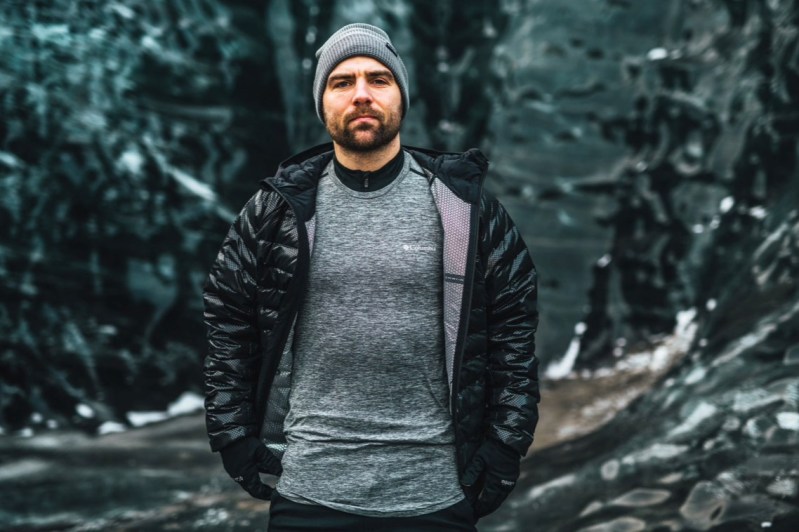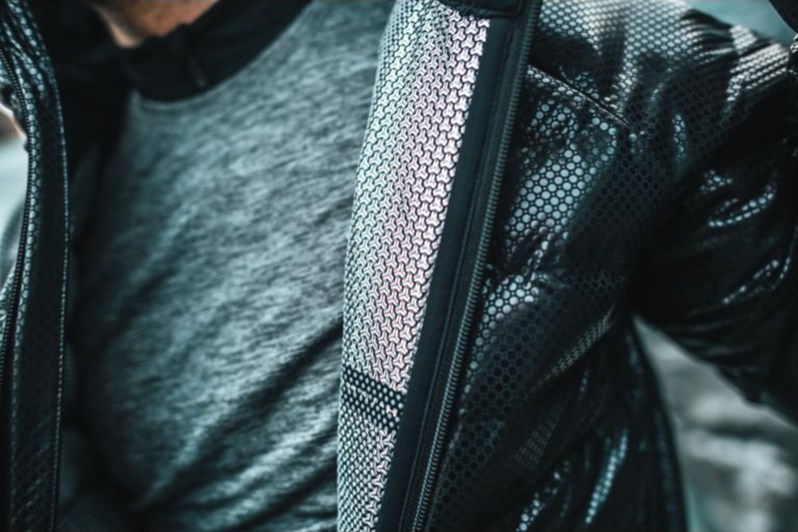
I’ve trusted Columbia Sportswear — one of our favorite outdoor clothing brands for men — to keep me warm for years. I’ve worn their insulated jackets, pants, hats, and gloves on frigid mountains at well above 15,000 feet of elevation. I’ve worn their parkas while trekking through the snowy backwoods of New England. And I trust Columbia base layers when I go for winter jogs around my suburban neighborhood.
Why? Because this is an outdoor gear and apparel brand that puts its money where its mouth is. Columbia dedicates huge amounts of money, time, and resources to developing technologies and materials that can be integrated into their products, and they don’t bring a new product to market until it has been thoroughly tested and proven successful. Still, I was glad to get the chance to do some product testing myself, and take it from their team and from me, the new Omni-Heat Black Dot technology from Columbia is successful, if you count staying incredibly warm even when you’re somewhere incredibly cold as a success.
I was not surprised, though. Development of Black Dot, which builds on and integrates with years of development of their proprietary Omni-Heat system (we’ll get to that) was led by Dr. Haskell Beckham, Columbia’s Senior Director of Innovation, a gent with a perfect pedigree for his role (a B.S. in textile chemistry from Auburn, a Ph.D. in chemistry — specifically the Program in Polymer Science and Technology — from MIT, post-doctoral work in polymer research at the Max Planck Institute, and on it goes). He and his team spent more than two years working on the latest innovations for keeping us warm out there, and they have been integrated into a few excellent new jackets from Columbia.
As I hands-on tested the Columbia Three Forks Black Dot jacket, that’s where we’ll focus from here on out, but FYI, all the apparel in the Black Dot collection uses the same tech.
Material
As with many packable puffers, the shell of this one is made largely from polyester with 10% elastane for some stretch. The lining is mostly nylon with 7% elastane, and the fill is proprietary Omni-Heat synthetic down made from recycled polyester. And if that were all that this jacket had going on, it would be pretty warm, but hardly unique from so many on the market these days.
But that’s where the basic stuff stops. Here’s where the science stuff starts. Inside the jacket, you will see scores of little silver-colored shiny dots. You know the “space blankets” in emergency survival kits or given to runners after marathons? These approximate the same warmth as those blankets, radiating heat you would otherwise lose right back at your body. They are spaced to still allow for moisture release and breathability, though, so you don’t get overheated or sweaty. And they are raised ever so slightly to trap warm air between the jacket and your base layers, keeping you even warmer.
But that’s old hat, Colombia has offered that lining for years. It’s what’s on the outside that matters here. Those myriad black dots are made from a material that captures infrared energy (solar heat, e.g.) and draws it down into the coat, thereby warming the layer of the jacket usually offering you the least insulation, which is to say the very exterior layer that is directly exposed to the cold.
To break that down, you have Omni-Heat Black Dots on the outside drawing in heat, an Omni-Heat lining reflecting heat you radiate back in, and a warm fill sandwiched between the two. Oh and also the coat is water-resistant and absolutely cuts windchill.

Fit and Style
Look, this is a packable puffer jacket, not a high fashion piece. I love the look of this and many a puffer, from the colorful Cotopaxi Fuego to the understated Fjallraven Pack Down and beyond, but this is a coat you wear for its performance, not its style. In terms of warmth, this jacket performs as well or better than any I have ever tried, and I only hesitate to go full superlative because I have not tested it beyond use in about 42 degrees Fahrenheit temperatures, and not in inclement weather yet, either.
The fit is comfortable and flexible with no limit to range of motion. Even with the drawcord hem cinched and the hood up it’s a comfortable coat I am sure would remain so many hours into a hike or climb. The Three Forks jacket has the zippered hand pockets and zippered chest pocket you’d expect, and it cinches right up to your chin with a fold of fabric keeping that pesky zipper away from your neck.
Value
At the time of this writing, the Three Forks Black Dot coat is still coming soon, but the price is set for $280. That’s a fine price indeed, and is in fact within $5 of current pricing of the aforementioned Fjallraven coat, and just $30 more than the Cotopaxi. Long story short, it’s a completely competitive price point for a jacket that surpasses most of the competition in warmth. Other coats in the new Black Dot collection are currently priced much higher, like at $350 and even up to $600, but the $300 coat is actually rather stylin’, while the $600 parka is suitable for a deep winter expedition.




